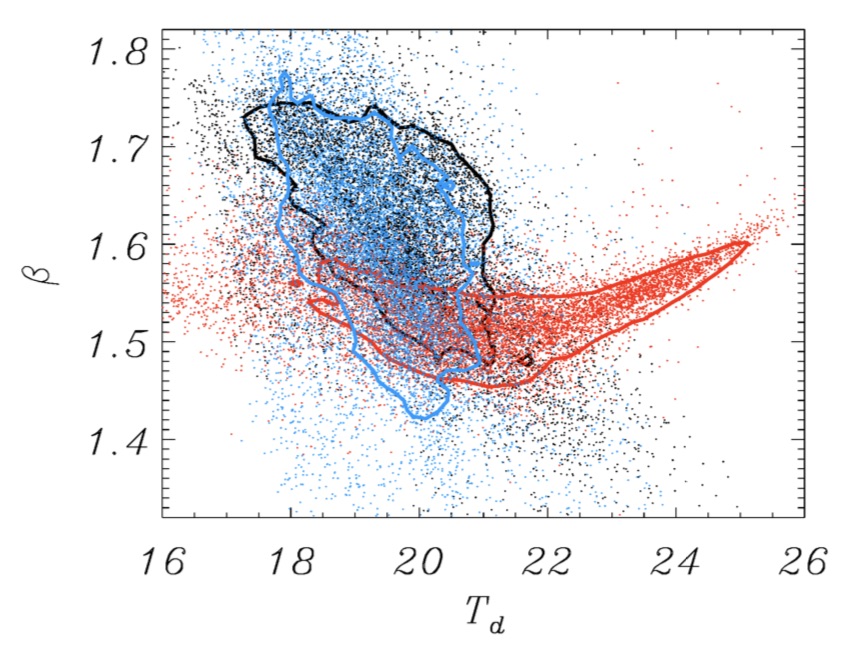Understanding the properties of dust emission in the microwave domain is an important premise for the next generation of cosmic microwave background (CMB) experiments, devoted to the measurement of the primordial B -modes of polarization. In this paper, we compare three solutions to thermal dust emission by the Planck Collaboration [A. Abergel, P. A. R. Ade et al. (Planck Collaboration), Astron. Astrophys. 571, A11 (2014)., 10.1051/0004-6361/201323195,R. Adam, P. A. R. Ade et al. (Planck Collaboration), Astron. Astrophys. 594, A10 (2016)., 10.1051/0004-6361/201525967, N. Aghanim, M. Ashdown et al. (Planck Collaboration), Astron. Astrophys. 596, A109 (2016)., 10.1051/0004-6361/201629022] to point out significant differences between their respective parameters (the spectral index beta , the optical depth tau , and the dust temperature Td). These differences originate from, e.g., the priors on the parameters or the contribution of the cosmic infrared background (CIB). In addition to investigating the angular distributions and statistical properties of each of the beta , tau , and Td-maps for the whole sky, we also compute cross-correlations among the maps, specifically the beta -Td and tau -Td correlations. All power spectra differ noticeably from each other, which we claim is partly due to the influence of the CIB. Peculiar behavior in the cross-correlations at dust temperatures ≳21 K supports this claim; the precise differences depend on the particular solutions considered. Finally, by the example of two zones on the sky (the BICEP2 zone and a region around the North Celestial Pole), we show that not only the properties of dust are different in these regions on the sky, but moreover the dust emission products do not agree. Furthermore, it is illustrated that the use of average values for dust parameters in one zone will not necessarily be applicable to another zone. In this context, we therefore recommend pixel-based approaches for future analyses, with less stringent constraints in form of priors, despite its higher computational expenditure, and an inclusion of a CIB treatment, which finally allows for a direction dependent removal of dust foregrounds. The central statement of this brief analysis is that while all available solutions are in rough agreement at ˜5 %- 20 % , further progress must be made to match the goals of planned B -mode experiments.
Liu, Hao; von Hausegger, Sebastian; Naselsky, Pavel
2017, Physical Review D, 95, 103517
http://adsabs.harvard.edu/abs/2017PhRvD..95j3517L
